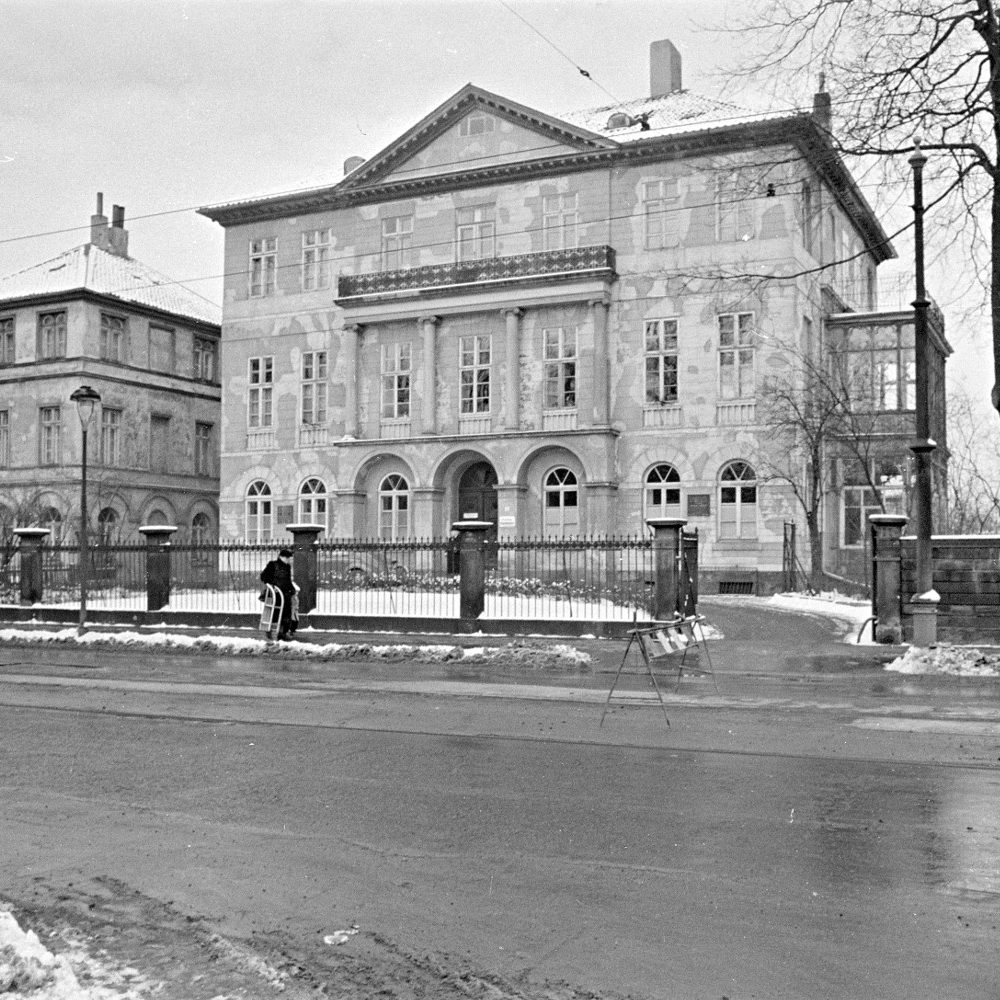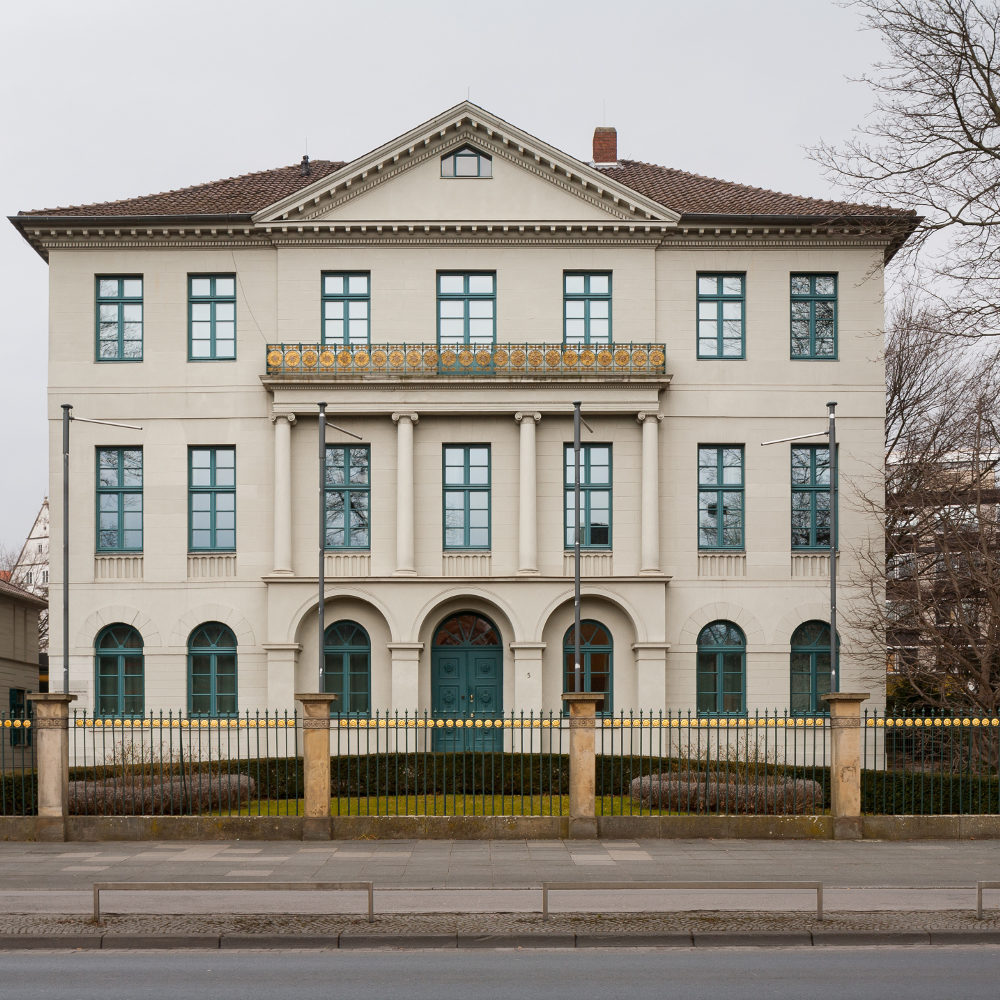The building was constructed during 1823-24 by the renowned court architect and town planner Georg Ludwig Friedrich Laves, who lived there until his death. In 1855, the adjacent annexe was added for use by his son as his studio and living quarters. From 1908 onwards, the buildings are used by the city authorities. Both houses survive the bombing raids unscathed. After 1945, it is occupied by various municipal departments, and in 1996 it is bought by the Lower Saxony Chamber of Architects.
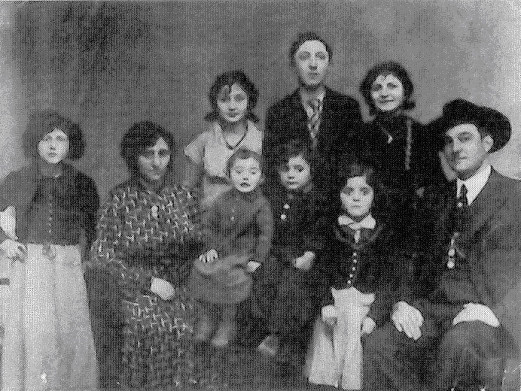
Public health policy as a means of promoting genetic selection
The health ministry assumes a new and prominent role in the National Socialist state. In the social Darwinist thinking of the new leaders, only the healthy, fittest “race” will survive in the eternal “struggle for existence”. This must be reinforced through positive as well as negative selection. This thinking based on concepts of social hygiene (“eugenics”) is not confined to Germany, and has been discussed in international circles since the end of the 19th century. The “Law for the Prevention of Offspring with Hereditary Diseases” enacted in July 1933 introduces provisions that can be traced back to a draft law dating from the latter part of the Weimar Republic. But with one crucial difference: infertility (“sterilisation”) can now be compulsorily enforced. By the time the Nazi regime is finally over, this measure will have affected some 400,000 men and women in Germany, Austria and the occupied territories.
Guardians of genetic quality
Following a law to streamline the health ministry in 1935, a new health department is established in Hanover. It moves into the Laves House on Friedrichswall and a nearby property on Leinstrasse. In Department III “Genetic and Racial Hygiene”, doctors assess the quality of couples wishing to marry in terms of their hereditary biology. This is also where information on sterilisations or abortions on the grounds of supposed hereditary diseases is recorded: entries, such as “congenital imbecility”, drunkenness, ailments, including epilepsy, blindness, physical deformities and the like (“negative selection, eradication”) can be found. In order to maintain some sort of legal semblance, requests for sterilisation are submitted for consideration to the newly established “Hereditary Health Court” at Hanover district court.
The department also has the task of ensuring that the “hereditary quality” of the German people is not debased by intermarriages with “foreign races”. Since the enactment of the Nuremberg Laws in 1935, these include Jews, Sinti and “dark-skinned people”. Marriage and sex outside marriage with people “of German blood” are strictly forbidden.
“Hereditary biological assessment”
Information is sent to the health department via a vast network of institutions and to people who, by virtue of their occupation, are in positions of responsibility. If there is a slightest suspicion of any hereditary disease, there is a legal duty on the part of doctors, dentists, self-employed nurses, “people’s nurses” employed by the health department, masseurs, naturopaths, midwives, and directors of nursing, penal and welfare educational institutions to notify the authorities. All this is recorded on an elaborate system of index cards, which document deviations from the norm within families over several generations (genealogical charts, genetic files). The type of entries made include: school performance, special aptitudes, character traits, alcohol abuse, infectious or hereditary diseases, any time spent in institutions or hospitals, body type (“Aryan” or “non-Aryan”), to name just a few examples. As they also record “deviant races”, they are utilised by the Kriminalpolizei [Criminal Investigation Department] and the Gestapo [Secret State Police] to identify and later deport Jews and Sinti. Direct orders are issued to all health departments to report “Gypsies, Gypsy half-breeds, travelling people living “like Gypsies” to the appropriate office of the Kriminalpolizei.
Consequences of failing the “intelligence test”
Around two thirds of the over 2,100 applications for sterilisation submitted by the municipal health department in the period 1935-1945 were based on the diagnosis of “congenital imbecility”. Those commonly targeted are Sinti. The fact that their children frequently move between different schools, their main language is Romani – an ancient language that does not have a written form – and the cultural gap between the minority and the dominant society mean that Sinti children are perceived as intellectual failures. As evidence, they are made to take official tests that combine the usual school subjects with questions on “general moral concepts” – which they are told they don’t possess. The reports usually lay bare the standard anti-gypsy stereotypes: …” devious, dishonest and deceitful, degenerate and dirty.”
Sterilisation for having many children
In the Nazi state, abortion is strictly punished as a “crime against the vitality of the German people”. The exception to this is women who are subjected to forced sterilisation because they are alleged to have hereditary diseases. An illustration of this is 33-year-old Sinti woman Gertrud W. who had given birth to 13 children. She is then summoned to the health department for a hereditary biology examination. However, she is not awarded the gold “Cross of Honour of the German Mother” (awarded for eight or more children), the bestowal of which requires being “of German blood”, having good “hereditary health”, “respectability” and a “morally impeccable way of life”. Instead, a medical assessor categorises her poor level of education as abnormal “intellectual imbecility”. The abortion is carried out at the school for midwives in Hanover, after which the woman is sterilised at the Nordstadtkrankenhaus, the city hospital. By the time her child is cut out by caesarean section, she is in her sixth or seventh month of pregnancy. The authorities record the birth and death of her child on the same day.
According to the “Auschwitz Decree” of Reichsführer SS Heinrich Himmler of December 1942, the Sinti and Roma who were exempt from deportation were forcibly sterilised. However, the health offices no longer took control of this, but the criminal investigation departments.
No “zero hour”
With regard to public health policy, just as in the entire state-police conduct towards the Sinti, there is no “zero hour” [a term referring to the end of the war in Germany, signalling the start of a new, non-Nazi Germany and implying an absolute break with the past and a radical new beginning]. Nor is it the case in Hanover. Although many health department records are destroyed during the air raids, the main genetic files [Erbkartei] comprising around 200,000 index cards with personal details (1942) survive as they are moved elsewhere for safekeeping. “Gypsies, Gypsy half-breeds, travelling people living like Gypsies” are flagged up on the cards with a special mark. There is evidence that this information was still being used as a matter of course well into the post-war years.
Further information
Wikipedia entry Nazi eugenics
Documentation and Cultural Centre for German Sinti and Roma Racial ideology
Be.Conscious.of.History The Persecution of the Sinti and Roma under National Socialism [in German]
Exter History Workshop National Socialist Health Policy [in German]
Further reading: Click here
Texts and images: Michael Pechel


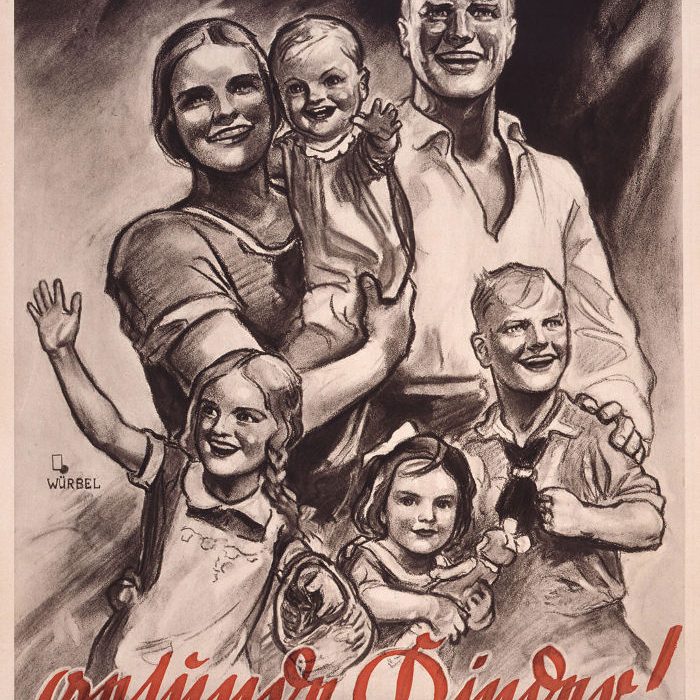
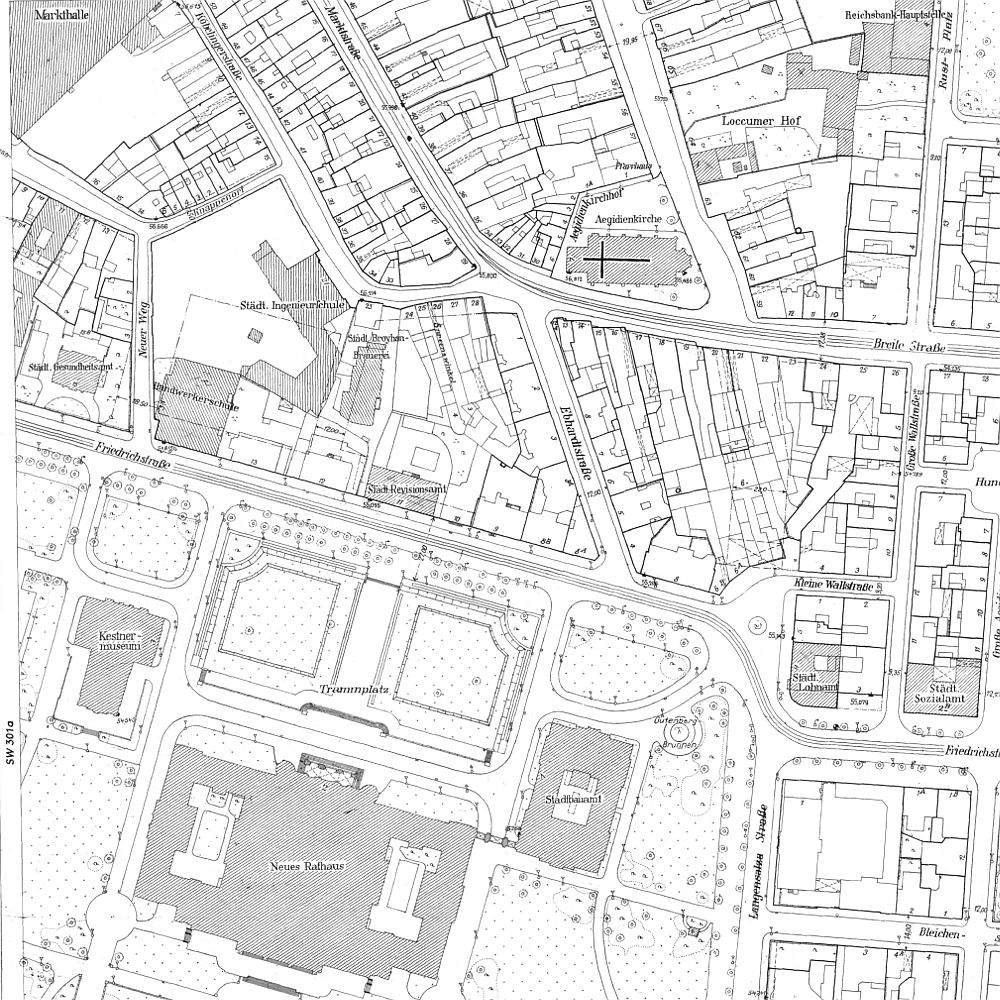
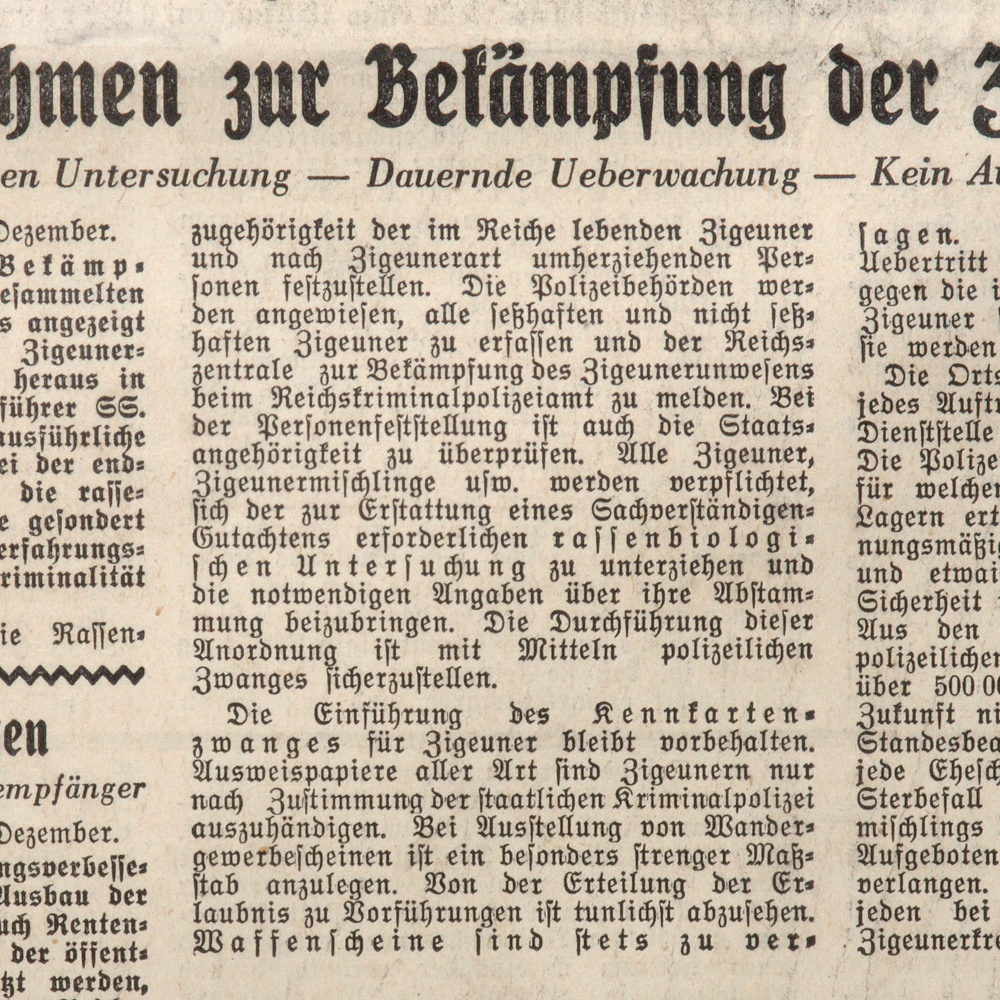
![Hanover: Sterilisations were often carried out in the former Municipal Hospital I ("Nordstadtkrankenhaus"). Photo 2012 by Losch/Baudenkmale [historical buildings], Wikimedia Commons](https://zukunft-heisst-erinnern.de/wp-content/uploads/2020/02/S_Gesundheitsamt_3-1000x1000.jpg)
